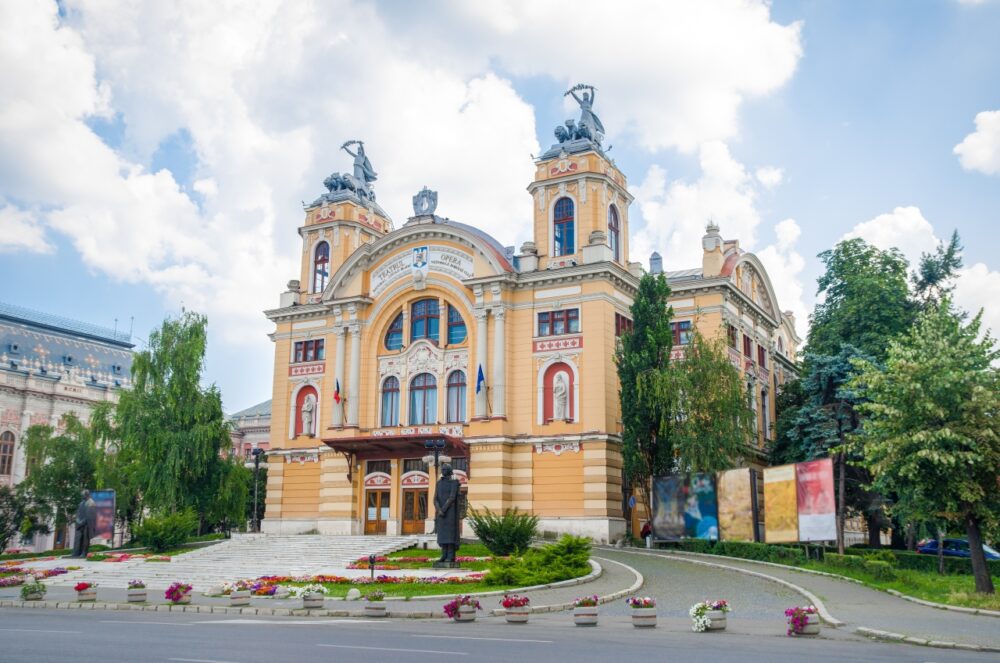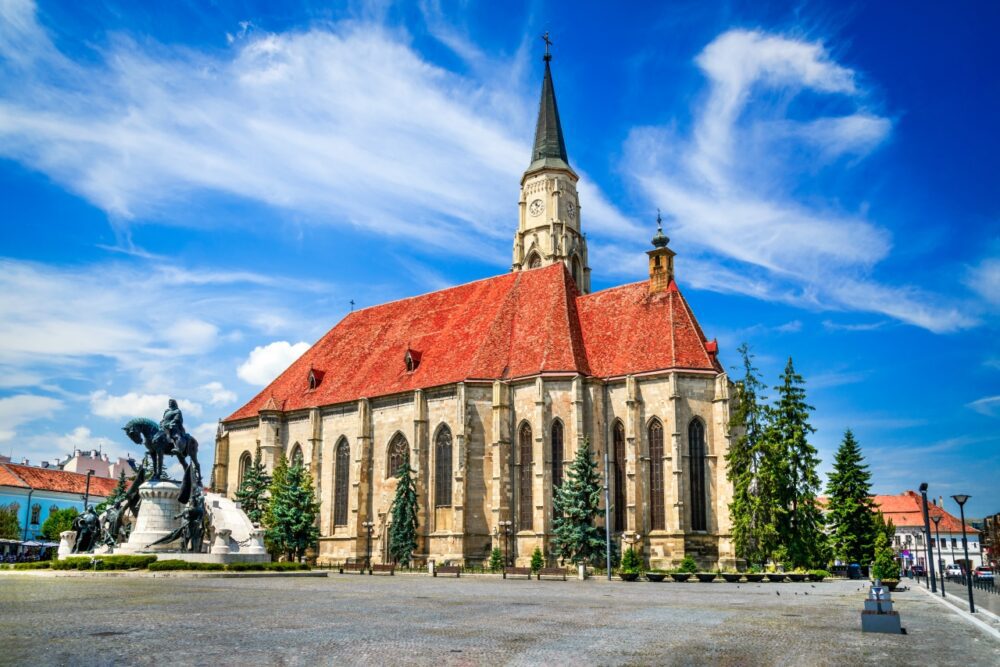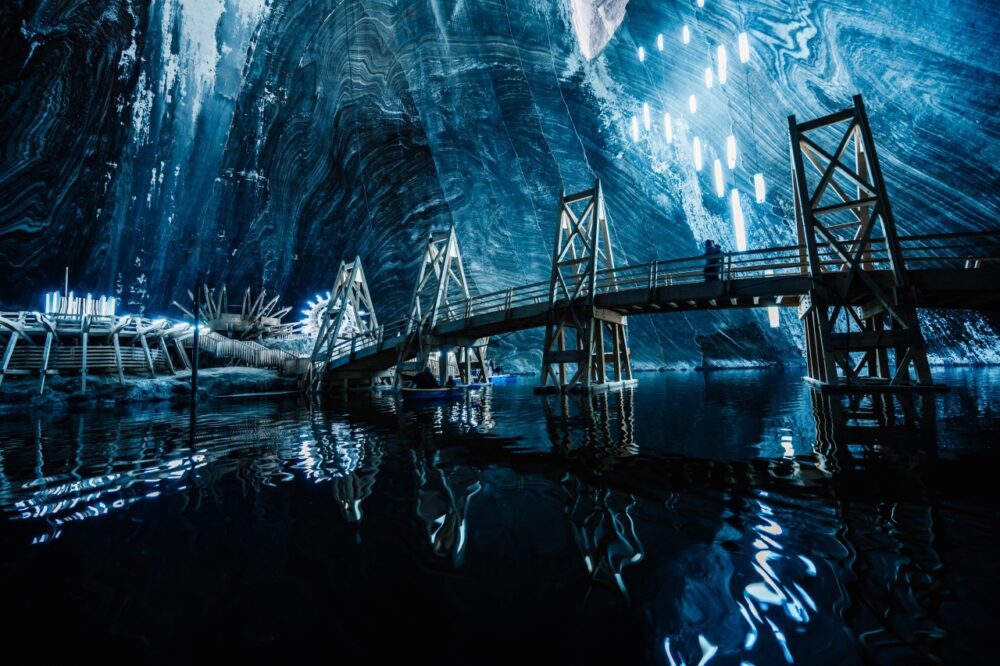
Is Cluj-Napoca worth visiting? Absolutely! The first time I visited Cluj-Napoca, I was amazed by how this city combines youthful energy with centuries of history. Known as the unofficial capital of Transylvania, Cluj-Napoca is where Gothic cathedrals, vibrant street art, and a buzzing café culture meet. From exploring its historic squares to soaking in the lively vibe of its student-filled streets, Cluj instantly won me over with its unique blend of old and new.
Situated in the heart of Romania, Cluj-Napoca is the country’s second-largest city and a major cultural hub. It’s home to stunning landmarks like St. Michael’s Church and the Banffy Palace, but what makes Cluj so special is its dynamic, creative spirit. This is a city packed with festivals, trendy bars, art galleries, and cool coffee shops, making it perfect for both history lovers and modern explorers. Add to that its proximity to stunning natural attractions like the Apuseni Mountains and Turda Gorge, and you’ve got a destination that truly has it all.
But is Cluj-Napoca worth visiting for you? In this blog post, we’ll explore the top 10 reasons why Cluj-Napoca should be on your travel list, from its fascinating history to its vibrant cultural scene. Plus, we’ll share travel tips to help you make the most of your visit to this Transylvanian gem. Keep reading to find out why Cluj-Napoca deserves a place on your Romania itinerary.
Table of Contents
Pros – Reasons You Should Visit Cluj-Napoca
1. A Thriving Cultural Scene

Cluj-Napoca is often referred to as the cultural capital of Transylvania, with a thriving arts and cultural scene that includes theatres, galleries, and music festivals. The Cluj National Theatre and the Art Museum of Cluj-Napoca are standout venues for cultural exploration.
I attended a live performance at the National Theatre and was impressed by the quality of the production and the stunning architecture of the building itself. Events like the Transilvania International Film Festival (TIFF) and Electric Castle Festival add vibrancy to the city’s cultural calendar, ensuring there’s always something exciting happening.
2. A Blend of Historical and Modern Architecture

Cluj-Napoca’s streets showcase a mix of Gothic, Baroque, and modern architecture. Iconic landmarks like St. Michael’s Church and Matthias Corvinus Statue sit alongside sleek office buildings and trendy cafes, creating a fascinating visual contrast.
Walking through the Old Town, I admired the harmonious blend of past and present. The Gothic spire of St. Michael’s Church is a standout feature, while modern additions like the Cluj Arena show the city’s forward-thinking spirit. Cluj’s architectural diversity adds depth and character to your visit.
3. Vibrant Nightlife
Cluj-Napoca is known for its lively nightlife, particularly thanks to its large student population. The city offers everything from laid-back pubs to high-energy clubs and rooftop bars. Areas like Piața Unirii and Piața Muzeului are hotspots for evening entertainment.
I spent an evening hopping between a rooftop bar with panoramic city views and a cozy pub in the Old Town. The atmosphere was welcoming and energetic, perfect for both locals and tourists. Whether you’re looking to dance, enjoy live music, or sip cocktails in a relaxed setting, Cluj’s nightlife caters to all tastes.
4. St. Michael’s Church and Matthias Corvinus Statue
The St. Michael’s Church, with its stunning Gothic architecture, and the Matthias Corvinus Statue, a tribute to Hungary’s renowned king, are two of Cluj’s most iconic landmarks. Located in Piața Unirii, they represent the city’s rich historical and cultural heritage.
I climbed the tower of St. Michael’s Church for breathtaking views of the square and surrounding streets. The statue of Matthias Corvinus, an important figure in Transylvanian history, adds a sense of grandeur to the area. These landmarks are must-visit spots for history and architecture enthusiasts.
5. Delicious Transylvanian Cuisine
Cluj-Napoca’s culinary scene is a mix of traditional Transylvanian flavours and contemporary gastronomy. Local dishes like varză à la Cluj (Cluj-style cabbage), ciorbă de fasole (bean soup), and cozonac are a must-try for food lovers.
I dined at a traditional restaurant near the Old Town and enjoyed hearty, flavourful meals paired with local wine. The city also boasts a growing number of international restaurants, vegan options, and artisanal coffee shops, ensuring something for every palate.
6. Proximity to Nature and Day Trips

Cluj-Napoca is surrounded by stunning natural attractions, making it an ideal base for outdoor enthusiasts. Nearby destinations like the Turda Salt Mine, Cheile Turzii (Turda Gorge), and the Apuseni Mountains offer hiking, climbing, and breathtaking scenery.
I visited the Turda Salt Mine and was amazed by its underground chambers and interactive exhibits. A short drive to Cheile Turzii rewarded me with dramatic cliffs and peaceful trails. Cluj’s proximity to these natural wonders ensures you can easily combine city exploration with outdoor adventures.
7. A Thriving University Town
As home to Babeș-Bolyai University, one of Romania’s largest and most prestigious institutions, Cluj-Napoca has a youthful energy and intellectual vibe. The city’s student population fuels its dynamic cultural and social scenes.
Walking through the university area, I loved the vibrant atmosphere, with lively cafes, bookshops, and student events happening around every corner. This youthful spirit gives Cluj a creative and forward-looking character that’s hard to resist.
8. Excellent Festivals and Events
Cluj-Napoca is a festival city, hosting world-class events like the Transilvania International Film Festival (TIFF), the Untold Music Festival, and the Electric Castle Festival. These events attract visitors from around the globe and showcase the city’s creative energy.
I attended TIFF and was impressed by the variety of films and the engaging atmosphere. The Untold Festival, held at Cluj Arena, is one of Europe’s premier electronic music festivals, drawing top DJs and massive crowds. No matter when you visit, there’s likely an event to enhance your experience.
9. Affordable Compared to Western Europe
Cluj-Napoca offers excellent value for money, making it an attractive destination for budget-conscious travellers. Accommodation, dining, and entertainment are significantly cheaper than in Western European cities, without compromising quality.
I stayed in a charming boutique hotel for a fraction of what I’d pay in similar destinations, and meals at top-notch restaurants were surprisingly affordable. This affordability allows visitors to enjoy high-quality experiences, from gourmet dining to cultural activities, without overspending.
10. Warm and Friendly Locals
The people of Cluj-Napoca are known for their warmth, hospitality, and pride in their city. Whether offering directions, recommending restaurants, or sharing local stories, locals make visitors feel welcome.
During my stay, a shop owner recommended a hidden wine bar that turned out to be one of my favourite spots. These personal touches and genuine interactions enhance the charm of Cluj and ensure you leave with wonderful memories.
Cons – Things You Should Consider When Visiting Cluj-Napoca
1. Traffic and Parking Challenges
Cluj-Napoca’s growing popularity and population have led to increased traffic congestion, especially during peak hours. Navigating the city by car can be frustrating, with limited parking spaces in the busy Old Town and near major attractions.
I found parking near Piața Unirii particularly challenging, and many public parking lots filled up quickly. Using public transport, taxis, or walking is often a better option for getting around the city. If you’re driving, plan to park further from the centre and walk to your destination.
2. Overcrowding During Festivals
Cluj-Napoca’s vibrant festivals, like the Untold Festival and the Transilvania International Film Festival (TIFF), attract thousands of visitors. While these events add excitement, they also lead to overcrowded streets, packed venues, and higher accommodation prices during peak times.
During Untold, I noticed long lines at restaurants and difficulty finding available taxis. If you’re visiting during a major festival but not attending, expect a busier city atmosphere and plan accommodation and dining reservations well in advance.
3. Limited Public Transport Options for Surrounding Areas
While Cluj-Napoca has a decent public transport network within the city, reaching nearby attractions like Turda Gorge or Apuseni Mountains can be difficult without a car. Bus schedules to these destinations are infrequent and may require careful planning.
I struggled to find reliable transport to Cheile Turzii and eventually opted for a guided tour. Renting a car or joining organised trips can make exploring the stunning Transylvanian countryside more convenient and flexible.
4. Weather Extremes in Summer and Winter
Cluj-Napoca experiences hot summers and cold winters, which can make outdoor activities less enjoyable during these extremes. Summers often bring temperatures exceeding 30°C (86°F), while winters can be snowy and bitterly cold.
During my summer visit, the heat made daytime exploration tiring, especially when walking through the Old Town. If visiting in summer, plan activities for the cooler mornings or evenings. In winter, pack appropriately for snow and icy conditions, particularly if venturing into the nearby mountains.
5. Smaller Scale of Attractions
While Cluj-Napoca is charming and culturally rich, it lacks the large-scale, iconic landmarks found in other European cities. Visitors looking for major monuments or extensive historical sites might find the city better suited for a shorter visit or as a base for exploring the region.
I found Cluj’s charm lies in its relaxed atmosphere and cultural experiences rather than blockbuster sights. Pairing Cluj with day trips to places like Turda Salt Mine or Sighișoara ensures a well-rounded and fulfilling trip.
When to Visit Cluj-Napoca
The best times to visit Cluj-Napoca are spring (April to June) and autumn (September to October), when the weather is mild, and the city’s parks and terraces are in full swing. Spring brings colourful blooms to Central Park, while autumn offers golden foliage and a relaxed vibe. Summer (July to August) is ideal for enjoying outdoor festivals like the renowned UNTOLD Festival, but it can be busier. Winters are colder but cosy, with Christmas markets and opportunities to explore nearby snowy landscapes.
How to Get to Cluj-Napoca
Avram Iancu International Airport Cluj (CLJ), just 9 kilometres from the city centre, is the primary gateway, with flights from major European cities via airlines like Wizz Air, Lufthansa, and Ryanair. From the airport, taxis and ride-hailing apps like Bolt provide quick and affordable access to the city, while buses like the 8L line offer budget-friendly options. Cluj-Napoca is also well-connected by train and bus, with regular services from other Romanian cities like Bucharest and Sibiu.
Where to Stay in Cluj-Napoca
Cluj-Napoca offers a range of accommodation options across its lively districts:
- Luxury: City Centre – Stay close to landmarks like Union Square and St. Michael’s Church. Options include Hotel Platinia, offering upscale suites, or DoubleTree by Hilton Cluj – City Plaza, combining modern luxury with an excellent location.
- Mid-range: Old Town or Near Central Park – Ideal for exploring the cultural heart of the city. Consider Capitolina City Chic Hotel, a stylish boutique stay, or Lol et Lola Hotel, known for its quirky design and comfort.
- Budget: Student Districts or Hostels in the Centre – Affordable choices like Retro Hostel or local guesthouses near the university area provide excellent value and atmosphere.
Getting Around Cluj-Napoca
Cluj-Napoca is a walkable city, particularly in the Old Town, where attractions like Union Square, the Ethnographic Museum, and St. Michael’s Church are easily accessible. For longer distances, the city’s CTP public transport network, including buses and trams, is efficient and affordable, with tickets available at kiosks or via mobile apps. Cycling is popular, with bike rentals and dedicated paths available, especially around Central Park. Taxis and ride-hailing apps like Bolt are also widely used and inexpensive, making them convenient for reaching attractions like the Botanical Garden.
How Long to Spend in Cluj-Napoca
Two to three days is ideal for exploring Cluj-Napoca’s highlights, including Union Square, the National Museum of Transylvanian History, and the Botanical Garden. This timeframe allows time to enjoy the city’s vibrant cafe culture, explore the Hoia Forest, and sample local cuisine. With an extra day, consider a day trip to the Turda Salt Mine, a fascinating underground attraction just 30 minutes away, or the Apuseni Mountains for hiking and nature. Cluj-Napoca’s mix of history, culture, and youthful energy makes it a standout destination in Transylvania.
Conclusion
So, is Cluj-Napoca worth visiting? Without a doubt! With its rich history, youthful energy, and creative cultural scene, Cluj-Napoca is one of Romania’s most exciting destinations. Highlights like St. Michael’s Church, the vibrant Unirii Square, and the city’s trendy cafés and bars make it a must-visit. While it might not have the medieval charm of Sibiu or Brașov, its dynamic vibe and modern edge make it just as captivating. If you’re ready to experience the heart of Transylvania, start planning your trip to Cluj-Napoca today—you won’t regret it!
